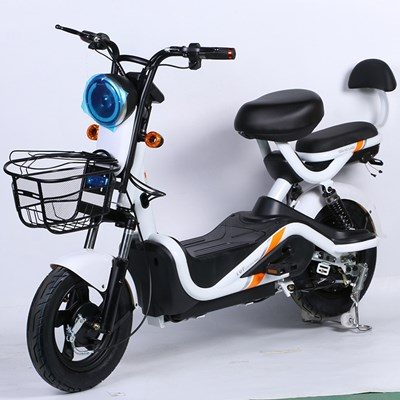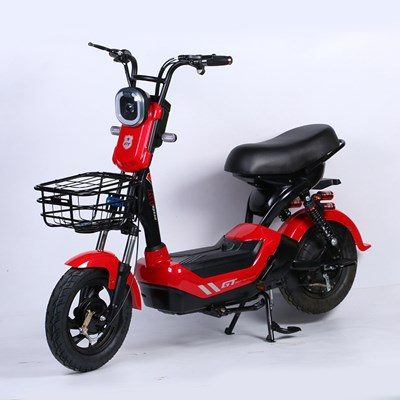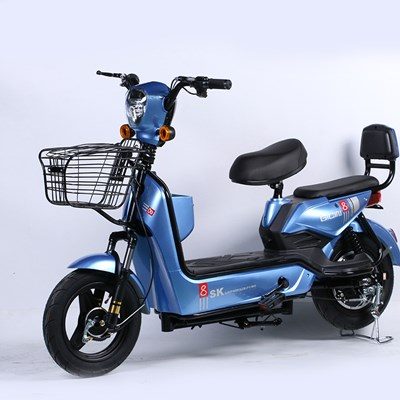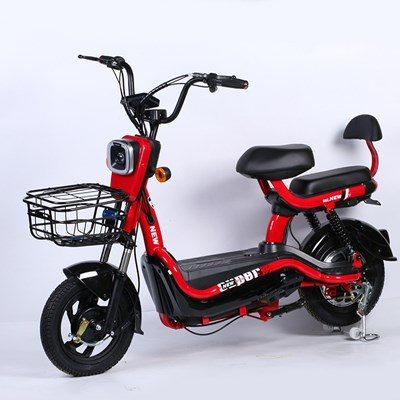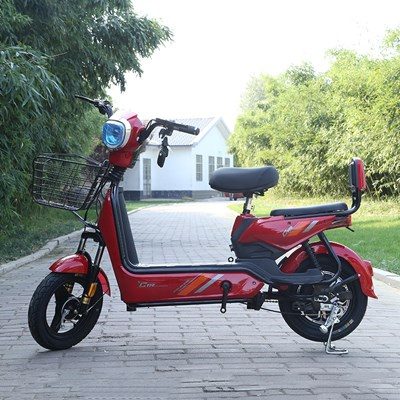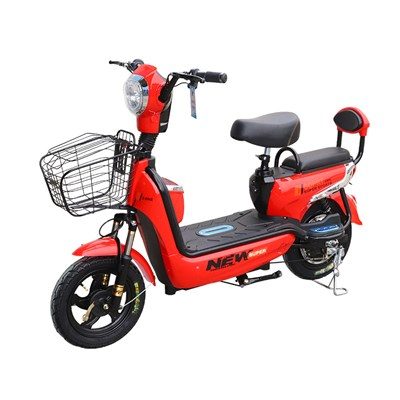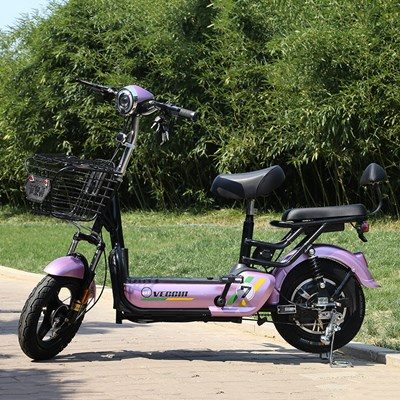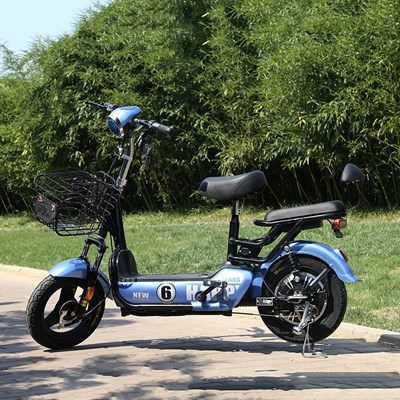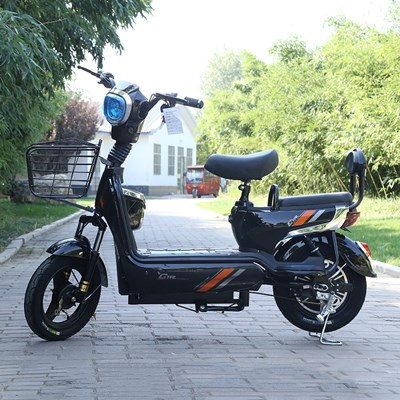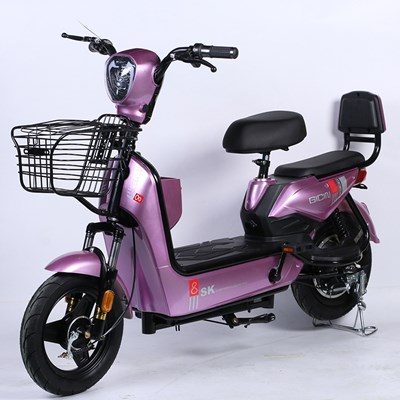Electric bicycle
Electric bicycle refers to a mechatronics personal vehicle that uses storage batteries as auxiliary energy sources on the basis of ordinary bicycles, and is equipped with motor, controller, storage battery, handlebars and other operating components and display instrument system.
The main components
Charger
The charger is a device that supplements the battery with electrical energy, and is generally divided into two-stage charging mode and three-stage charging mode. Two-stage charging mode: first, constant voltage charging, the charging current gradually decreases with the increase of battery voltage, when the battery power is replenished to a certain level, the battery voltage will rise to the set value of the charger, and then it will be converted to trickle charging. Three-stage charging mode: At the beginning of charging, the battery is charged with constant current first, and the battery is quickly recharged; after the battery voltage rises, the battery is switched to constant voltage charging. At this time, the battery energy is slowly replenished, and the battery voltage continues to rise; reaching the charger’s termination voltage When the value is reached, switch to trickle charge to maintain the battery and supply the battery’s self-discharge current.
Battery
Batteries are on-board energy sources that provide energy for electric vehicles, and electric vehicles mainly use a combination of lead-acid batteries. In addition, nickel-metal hydride batteries and lithium-ion batteries have also been used in some portable folding electric vehicles.
Tips for use: The main control board of the controller is the main circuit of the electric vehicle, which has a large working current and will emit a large amount of heat. Therefore, do not park the electric vehicle in the sun or expose it to rain for a long time to avoid malfunction of the controller.
Controller
The controller is a component that controls the speed of the motor, and is also the core of the electric vehicle’s electrical system. It has under-voltage, current-limiting or over-current protection functions. The intelligent controller also has a variety of riding modes and a self-checking function for the electrical components of the vehicle. The controller is the core component of electric vehicle energy management and various control signal processing.
Turn handle, brake handle
The handle, brake handle, etc. are the signal input components of the controller. The handle signal is the driving signal for the rotation of the electric vehicle motor. The brake handle signal is an electrical signal that the brake outputs to the controller from the internal electronic circuit when the electric vehicle brakes; after the controller receives this signal, it will cut off the power supply to the motor to realize the brake power-off function.
Power sensor
The assist sensor is a device that detects the pedal force back to the pedal speed signal when the electric vehicle is in the assist state. According to the electric driving power, the controller can automatically match the manpower and electric power, and jointly drive the electric vehicle to rotate. The most trendy power-assisted sensor is the central axis bilateral torque sensor. Its product feature is that it can collect the pedal force on the left and right sides, and adopts a non-contact electromagnetic signal acquisition method, thereby improving the accuracy and reliability of signal acquisition.
Motor
The most important accessory of an electric bicycle is the motor. The motor of an electric bicycle basically determines the performance and grade of the car. Most of the motors used in electric bicycles are high-efficiency rare earth permanent magnet motors, which are mainly divided into three types: high-speed brushed gear + wheel reduction motors, low-speed brushed motors and low-speed brushless motors.
The motor is a component that converts battery electrical energy into mechanical energy and drives the electric wheels to rotate. There are many types of motors used in electric vehicles in terms of their mechanical structure, speed range and electrification form. Common ones are: brushed hub motors with gears, brushless hub motors with gears, brushless hub motors with gears, brushless hub motors with gears, high disk motors, side mounted motors, etc.
Lamps, meters
Lamps and meters are a combination of components that provide lighting and display the status of electric vehicles. The instrument generally provides battery voltage display, vehicle speed display, riding status display, lamp status display, etc. The intelligent instrument can also display the failure status of various electrical components of the vehicle.
Common structure
Most electric bicycles use a hub-type motor to directly drive the front or rear wheels to rotate. These in-wheel motors are matched with wheels of different wheel diameters according to different output speeds to drive the entire vehicle at a speed of up to 20km/h. Although the shapes of these electric vehicles and the installation positions of the batteries are not the same, their driving and control principles have similarities. This type of electric bicycle is the mainstream of electric vehicle products.
Specially constructed electric bicycle
A small number of electric vehicles are driven by non-hub motors. These electric vehicles use side-mounted or columnar motors, mid-mounted motors, and friction tire motors. Generally, the weight of the electric vehicle driven by this motor will be reduced, and the efficiency of the motor will be lower than that of the wheel hub. In the case of the same battery energy, the whole vehicle using these motors will generally reduce the continuous mileage of the wheel-type vehicle by 5%-10%.%-10%.
Bike Manufacturers, Wholesale Bicycle Suppliers, Mountain Bike Manufacturers, Kids Balance Bike, Electric Bike


Electric Bike
You are here:
- Home
- Electric Bike























